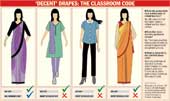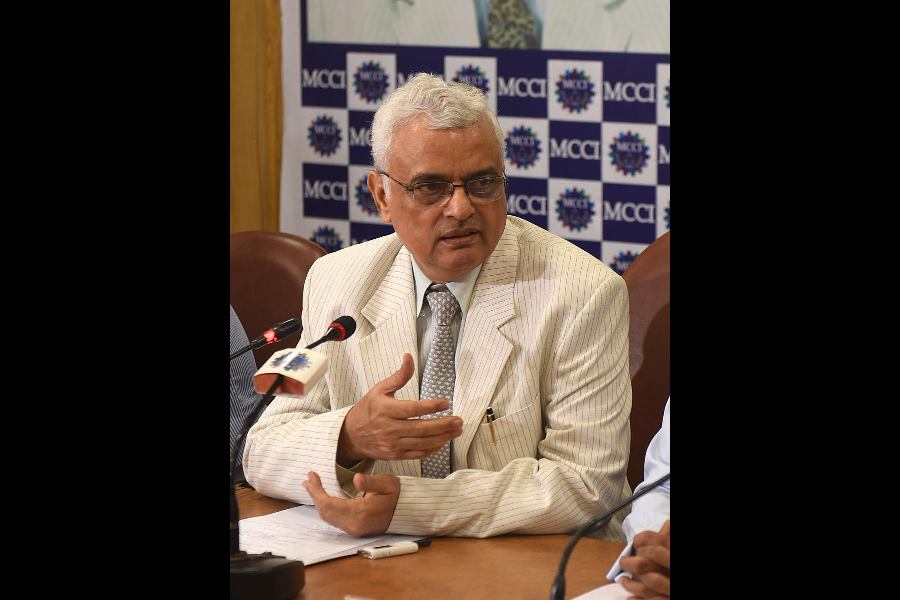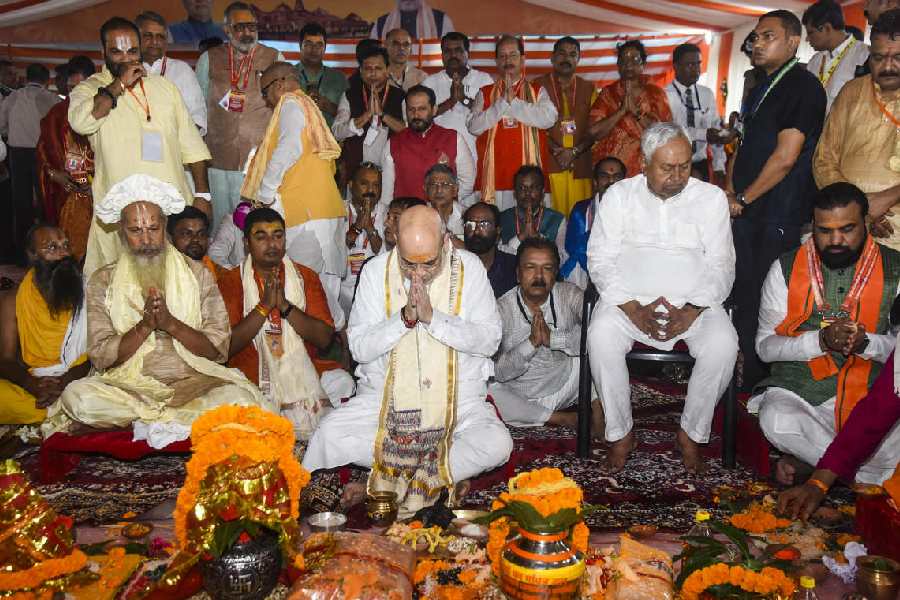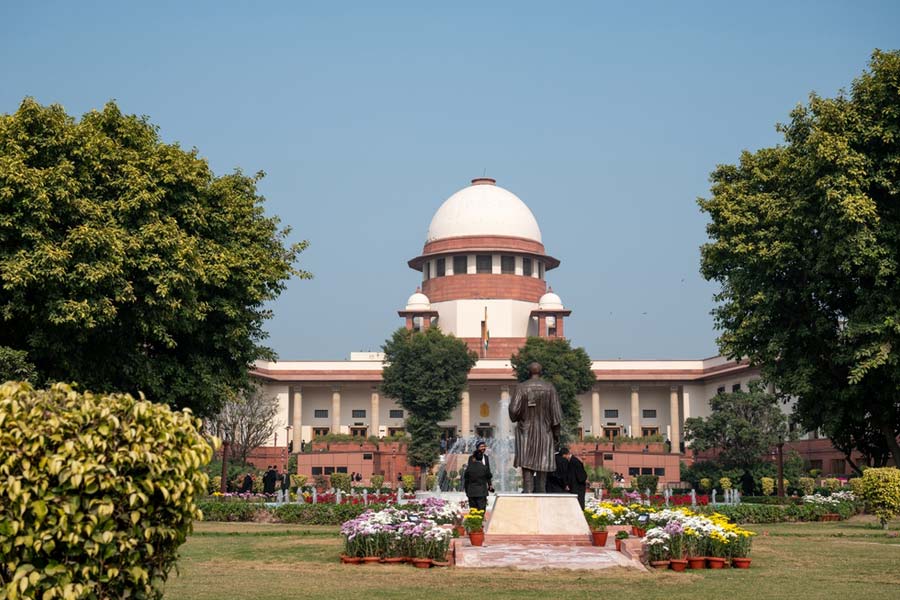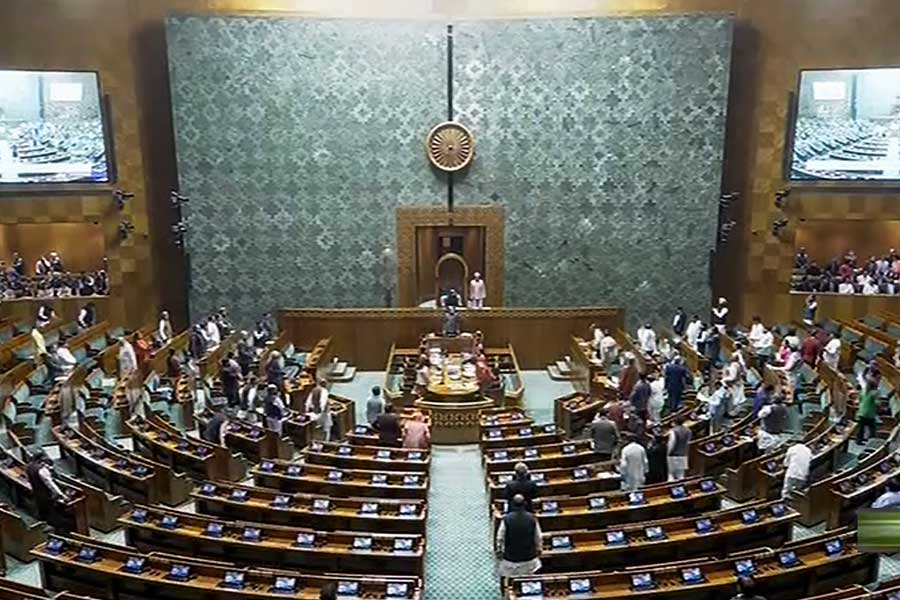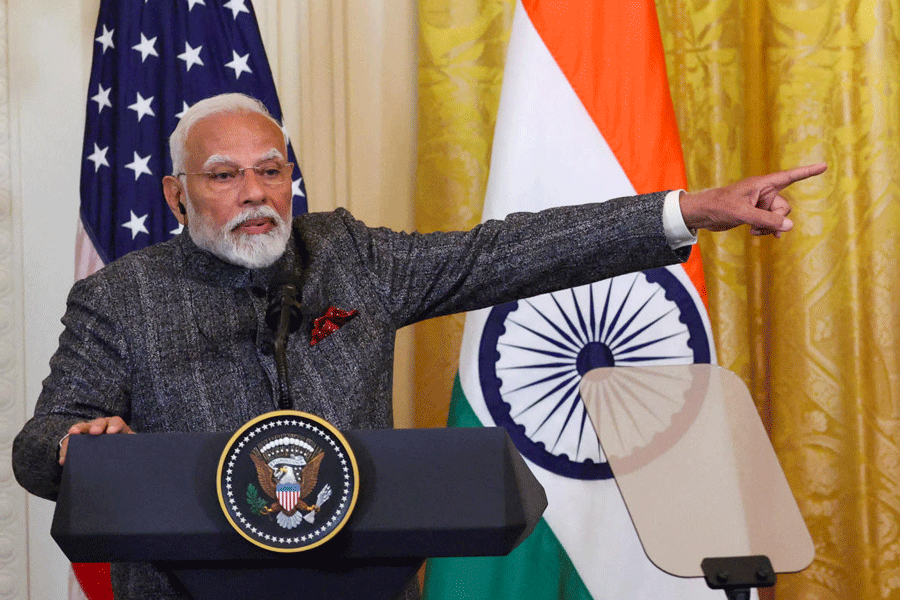 |
Teachers have the right to choose what to wear to class, Calcutta High Court ruled on Friday, as long as it is “decent”.
On the eve of the 50th anniversary of the birth control pill, the court made it clear that school authorities must not shove a sartorial pill down the throats of teachers who should be considered “educated” and “responsible” enough to know where to draw the line (or the pallu).
With regard to a petition moved by seven teachers of a government-run school in Singur, Justice Jayanta Biswas said: “The dress of a teacher should be decent. The teachers are educated enough and know about the decency of their dress. So, the school authority need not impose a dress code on them.”
The 20-page judgment, dwelling on various aspects of the decency debate, could end a decade-long controversy over the imposition of dress codes — written or unwritten — on teachers by educational institutions.
“Though Friday’s judgment is restricted to a particular school, the general order can be used as a precedent in other cases also,” felt legal experts that Metro spoke to at the high court.
Swati Purakayastha and six other teachers of Singur Golap-Mohini Balika Vidyalaya had challenged a memorandum issued by the school management directing them to attend classes in white saris with a coloured border.
Earlier this week, the case came up for hearing before Justice Biswas. Ekramul Bari, the lawyer appearing for the teachers, stated: “This memo is against the fundamental rights of the teachers. The school management cannot impose a dress code on them. It can only ask the teachers to be dressed decently.”
That has been the crux of the argument of teachers engaged in the dress code dispute down the years. Most such disputes have simmered behind closed doors but a few have hit the public eye.
n2002: A teacher of a women’s college on Sarat Bose Road quits after being stopped from taking classes in salwar-kameez.
n2004: Three teachers complain to the School Service Commission alleging harassment by their schools for wearing salwar-kameez to class.
n 2005: Bonhooghly Girls High School in Baranagar debars teachers from wearing lipstick, kajal, bindi, danglers or eye-catching clothes, triggering an agitation.
n2007: Eight teachers of Bakrahat Girls High School are heckled and threatened with public humiliation for protesting the ban on salwar-kameez in the classroom.
n2009: Eight teachers of Sarisha Ramakrishna Mission Sarada Vidya Mandir are confined in a room for over 10 hours by students, guardians and local residents for their refusal to wear only white saris as decreed by the school management.
Friday’s judgment drew cheers from teachers in schools and colleges, government and private institutions. “Whether a teacher is good or bad does not depend on her choice of clothes. The authorities, instead of keeping a close watch on what a teacher is wearing, must pay attention to her teaching skills,” said Tollywood actress Ushasie, who teaches economics in a south Calcutta college.
Her words were echoed by a teacher in a government-aided school in north Calcutta. “We are surely mature enough to know how to dress when we go to school. A dress code reflects a dictatorial attitude at one level and a trust deficit at another,” said the 38-year-old mother of two. “It is humiliating to tell my children there is an unwritten code that I cannot wear a sleeveless blouse to school.”
Then there is the age and comfort factor. “A lot of young teachers like me are not comfortable in saris and that is a fact of life. Why should I be forced to wade through waterlogged streets near my school when wearing a sawar-kameez would be so much easier?” demanded a 29-year-old teacher of a co-educational school in south Calcutta, where the administration has an unwritten saris-only-please code in place.
Not for long.

